Today Current Affairs: 15th May 2021 for UPSC IAS exams, State PSC exams, SSC CGL, State SSC, RRB, Railways, Banking Exam & IBPS, etc
Table of Contents
Red-Eared Slider Turtle:
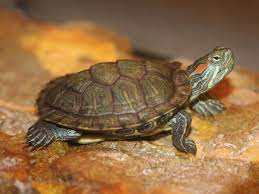
The invasive red-eared slider can become a major threat to the biodiversity of water bodies across the Northeast region of India.
- The Northeast region of India is home to more than 72% of the turtle and tortoise species in the country.
- Scientific Name: Trachemys scripta elegans
- Habitat: U.S. and northern Mexico
- Description: The red-eared slider derives its name from red stripes around the part where its ears would be and from its ability to slide quickly off any surface into the water.
- This turtle is an extremely popular pet due to its small size, easy maintenance, and relatively low cost.
Concerns:
- Invasive Species: Since it is an invasive species they grow fast and virtually leave nothing for the native species to eat and have a negative impact on the areas and the species living in the areas they invade.
- Catch-22 Situation: People who keep the turtle as pets become sensitive about turtle conservation but endanger the local ecosystem, probably unknowingly, by releasing them in natural water bodies after they outgrow an aquarium, tank or pool at home.
- Impact on Human Health: They can impact human health when these species may accumulate toxins in their tissues which pass on with the food chain up to humans.
Invasive Species of India:
- An invasive species is an organism that causes ecological or economic harm in a new environment where it is not native.
- There are many invasive species in India. For eg: Charru Mussel, Lantana bushes, Indian Bullfrog, etc.
Report On Global Remittances: World Bank:

According to the latest edition of the World Bank’s Migration and Development Brief, despite Covid-19, remittance flows remained resilient in 2020, registering a smaller decline than previously projected.
Remittance Inflow of India:
- India being at the top, received over USD 83 billion in remittances in 2020, a drop of just 0.2 percent from the previous year, despite a pandemic that devastated the world economy.
- India’s remittances fell by just 0.2% in 2020, with much of the decline due to a 17% drop in remittances from the United Arab Emirates, which offset resilient flows from the United States and other host countries.
- In 2019, India had received USD 83.3 billion in remittances.
Global Remittances:
- China is second in terms of global remittances in 2020.
- China received USD 59.5 billion in remittances in 2020.
- India and China are followed by Mexico, the Philippines, Egypt, Pakistan , France and Bangladesh.
Remittance outflow :
- Remittance outflow was the maximum from the United States (USD 68 billion), followed by UAE, Saudi Arabia, Switzerland, Germany, and China.
Reason for the Steady Flow of Remittances:
- Fiscal stimulus that resulted in better-than-expected economic conditions in host countries.
- Shift in flows from cash to digital and from informal to formal channels.
- Cyclical movements in oil prices and currency exchange rates.
Remittance:
- A remittance is money sent to another party, usually one in another country.
- The sender is typically an immigrant and the recipient a relative back home.
- Remittances represent one of the largest sources of income for people in low-income and developing nations. It often exceeds the amount of direct investment and official development assistance.
- Remittances help families afford food, healthcare, and basic needs.
- India is the world’s biggest recipient of remittances. Remittances bolster India’s foreign exchange reserves and help fund its current account deficit.
World Bank:
- The Bretton Woods Conference held in 1944, created the International Bank for Reconstruction and Development (IBRD) along with the International Monetary Fund (IMF).
- The IBRD later became the World Bank.
- The World Bank Group is a unique global partnership of five institutions working for sustainable solutions that reduce poverty and build shared prosperity in developing countries.
- Members:
- It has 189 member countries.
- India is also a member country.
Enforced Or Involuntary Disappearances (WGEID):

Since the coup in Myanmar, the United Nations Working Group on Enforced or Involuntary Disappearances (WGEID) has received reports of enforced disappearances from the family members of victims.
- Many Asian regimes are using enforced disappearances as a tool to suppress the people.
- An enforced disappearance occurs when a person is secretly abducted or imprisoned by a state or political organization, or by a third party with the authorization, support, of a state or political organization, followed by a refusal to acknowledge the person’s fate and whereabouts, with the intent of placing the victim outside the protection of the law.
- Enforced disappearances became widely known to the world in the 1970s and the early 1980s during the ‘Dirty War’ in Argentina.
- Dirty War, also called Process of National Reorganization, was a infamous campaign waged by Argentina’s military dictatorship against suspected left-wing political opponents.
Constituents of Enforced Disappearances:
- Deprivation of liberty against the will of the person.
- Involvement of government officials, at least by acquiescence.
- Refusal to acknowledge the deprivation of liberty or concealment of the fate or whereabouts of the disappeared person.
Recent Occurrences:
- Myanmar: The military is committed to suppressing the people’s movement, and the police are carrying out unimaginable acts of violence and oppression against those demanding freedom of expression and the restoration of democracy.
- China: Under the pretext of re-education to prevent terrorism, Uyghur minority ethnic group members are forcibly sent to what Chinese authorities call ‘vocational education and training centers’, with no information on their whereabouts.
- Sri Lanka: It has experienced more than three decades of domestic conflict accompanied by various forms of enforced disappearances.
- Pakistan and Bangladesh: Enforced disappearances are being committed in the name of counter-terrorism measures.
Global Measures:
United Nations Working Group on Enforced or Involuntary Disappearances (WGEID):
- In 1980, the UN Commission on Human Rights (now replaced with UN Human Rights Council) decided to “establish for a period of one year a working group consisting of five of its members, to serve as experts in their individual capacities, to examine questions relevant to enforced or involuntary disappearances of persons”.
- Functions:
- Assist Families:
- It assists families in determining the fate or whereabouts of their family members who have reportedly disappeared.
- Oblige States:
- It is entrusted with monitoring the progress of States in fulfilling their obligations deriving from the Declaration and to provide to Governments assistance in its implementation.
- Involves NGOs:
- It draws the attention of Governments and non-governmental organizations (NGOs) to different aspects of the Declaration and recommends ways of overcoming obstacles to the realization of its provisions.
- Assist Families:
International Convention for the Protection of all Persons from Enforced Disappearance in 2006:
- To protect the right to be free from enforced disappearances, the international community adopted the International Convention for the Protection of all Persons from Enforced Disappearance in 2006.
- This became effective in 2010 and the Committee on Enforced Disappearances (CED) was established.
- CED and WGEID coexist side by side and seek to collaborate and coordinate their activities with a view to strengthening the joint efforts to prevent and eradicate enforced disappearances.
- The number of participating states is still very low compared to other treaties.
- Among 63 member states of the treaty, only eight states from the Asia-Pacific region have ratified or acceded to the treaty.
- Only four East Asian states Cambodia, Japan, Mongolia, and Sri Lanka have ratified it.
- India has signed but not ratified it.
Cyclone ‘Tauktae’:
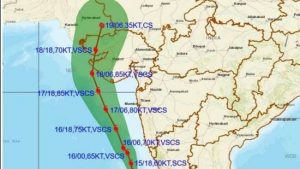
Cyclone ‘Tauktae’, which lay like a deep depression over the Arabian Sea close to Lakshadweep, was likely to intensify into a ‘very severe cyclonic storm’ with wind speeds of 150-160 kmph gusting to 175 kmph, bringing heavy to very heavy rain to many parts of the western coast, the India Meteorological Department (IMD) said.
- There is yet not clear whether the cyclonic storm will cross the Gujarat coast or just skirt it by May 18.
- It is very likely to intensify into a cyclonic storm during the next 12 hours and is very likely to intensify further during the subsequent 24 hours and move north, north-westwards, IMD said.
- In view of the Cyclone Tauktae warning, National Disaster Response Force (NDRF) has deployed 24 teams in Kerala, Karnataka, Tamil Nadu, Gujarat, and Maharashtra.
MICE RAIN: Australia:
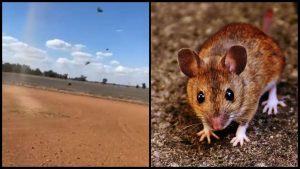
The government of New South Wales (NSW) in Australia has extended a support package of $50 million to farmers to deal with a devastating mouse plague that has affected farmers, community members, and residents.
- To control the plague, the government has now authorized the use of an otherwise outlawed poison called
- The current plague is being called one of the worst plagues in decades and started being reported around mid-March in Australia’s eastern states.
- In some places, residents of affected areas reported mice falling out from rooftops causing “mice rain”.
- Researchers attribute the plague to an unusually abundant grain harvest, which caused a surplus of mice earlier in the season.
- Add to this the fact that mice have a short breeding cycle (a pair of breeding mice can give birth to a new litter every 21 days or so) and are not very choosy about food.
- Rodents (which includes rats and mice) are the second most successful mammals on the planet after humans.
- Rodents are capable of destroying food grains and can cause widespread damage to domestic households, commercial businesses, farms, manufacturers,, and livestock
- Further, rodents can not only gnaw through materials but can also ruin supplies by excreting them.
- Rodents can also cause diseases such as leptospirosis and typhus fever. They can also carry fleas or ticks that can harm pets and humans.
Particularly Vulnerable Tribal Groups PVTGs:
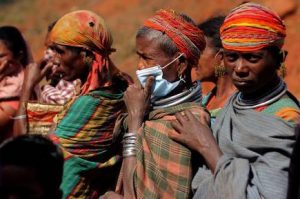
With the second wave of COVID-19 sweeping across the rural heartland of Odisha, infections are being reported among the Particularly Vulnerable Tribal Groups (PVTGs).
- As many as 21 tribals across eight different PVTGs in the State have so far tested positive, including two from the Bonda tribe, known for its secluded lifestyle. Bonda people live in highlands, 3,500-feet above sea level, in Malkangiri, the southernmost district of Odisha.
- Four members of Dongria Kondh, another PVTG, have tested positive in Parasali panchayat of Kalyansinghpur block in Rayagada district.
- Odisha has among the largest and most diverse tribal populations in the country.
- Of the 62 tribal groups residing in Odisha, 13 are recognized as PVTGs.
- According to the 2011 Census, Odisha’s share of the country’s total tribal population was 9%.
- Tribals constitute 22.85% of the State’s population.
- The PVTGs in the states are Bonda, Birhor, Chuktia Bhunjia, Didayi, Dongaria Kandha, Hill Kharia, Juang, Kutia Kondh, Lanjia Saora, Lodha, Mankirdia, Paudi Bhuyan and Saora.
- These PVTGs have been identified on the basis of stagnant or diminishing populations, subsistence level of the economy associated with pre-agricultural stages of hunting, food gathering and shifting cultivation, and relative physical isolation.
Malerkotla:
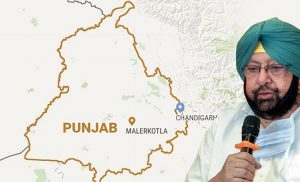
Punjab Chief Minister announced the creation of a new district of Malerkotla, carving the state’s only Muslim-majority town from Sangrur district.
- Malerkotla will be the 23rd district of the State.
- Adjoining Amargarh and Ahmedgarh will also form part of the Malerkotla district.
- Initially, the sub-divisions of Malerkotla and Ahmedgarh, as well as the sub-tehsil of Amargarh, would be included in the newly created district.
- The process of bringing villages under the jurisdiction of the Malerkotla district would begin later, after the conclusion of census operations.
- Tracing the town’s history, the chief minister said it was established in 1454 by Sheikh Sadruddin-i-Jahan from Afghanistan and subsequently the State of Malerkotla was established in 1657 by Bayazid Khan.
- Malerkotla was later merged with other nearby princely states to create the Patiala and East Punjab States Union (PEPSU).
- During the reorganization of states in 1956, the territory of the erstwhile State of Malerkotla became part of Punjab.
The Iron Dome Aerial Defence System:

The Iron Dome aerial defence system intercepted a Hamas Unmanned Aerial Vehicle (UAV) that crossed from Gaza into Israel, Israeli Defence Forces (IDF) said on social media.
- Iron Dome is a multi-mission system capable of intercepting rockets, artillery, mortars and Precision Guided Munitions like very short-range air defence (V-SHORAD) systems as well as aircraft, helicopters and Unmanned Aerial Vehicles (UAV) over short ranges of up to 70 km.
- It is an all-weather system and can engage multiple targets simultaneously and be deployed over land and sea.
- Iron Dome is manufactured by Rafael Advanced Defence Systems and has been in service with the Israeli Air Force since 2011.
- The radar system was developed by Elta.
- Its development was prompted after a series of rocket attacks on Israel by Hezbollah and Hamas in the 2000s.
- An Iron Dome battery consists of a battle management control unit, detection and tracking radar and a firing unit of three vertical launchers, with 20 interceptor missiles each.
- The interceptor missile uses a proximity fuse to detonate the target warhead in the air.
- The Iron Dome is deployed in a layered defence along with David’s Sling and Arrow missile defence system which are designed for medium- and long-range threats.
- The I-DOME is the mobile variant with all components on a single truck and C-DOME is the naval version for deployment on ships.
- One of the system’s important advantages is its ability to identify the anticipated point of impact of the threatening rocket, to calculate whether it will fall in a built-up area or not, and to decide on this basis whether or not to engage it.
- This prevents unnecessary interception of rockets that will fall in open areas and thus not cause damage, the paper states. The system has intercepted thousands of rockets so far and, according to Rafael, its success rate is over 90%.




